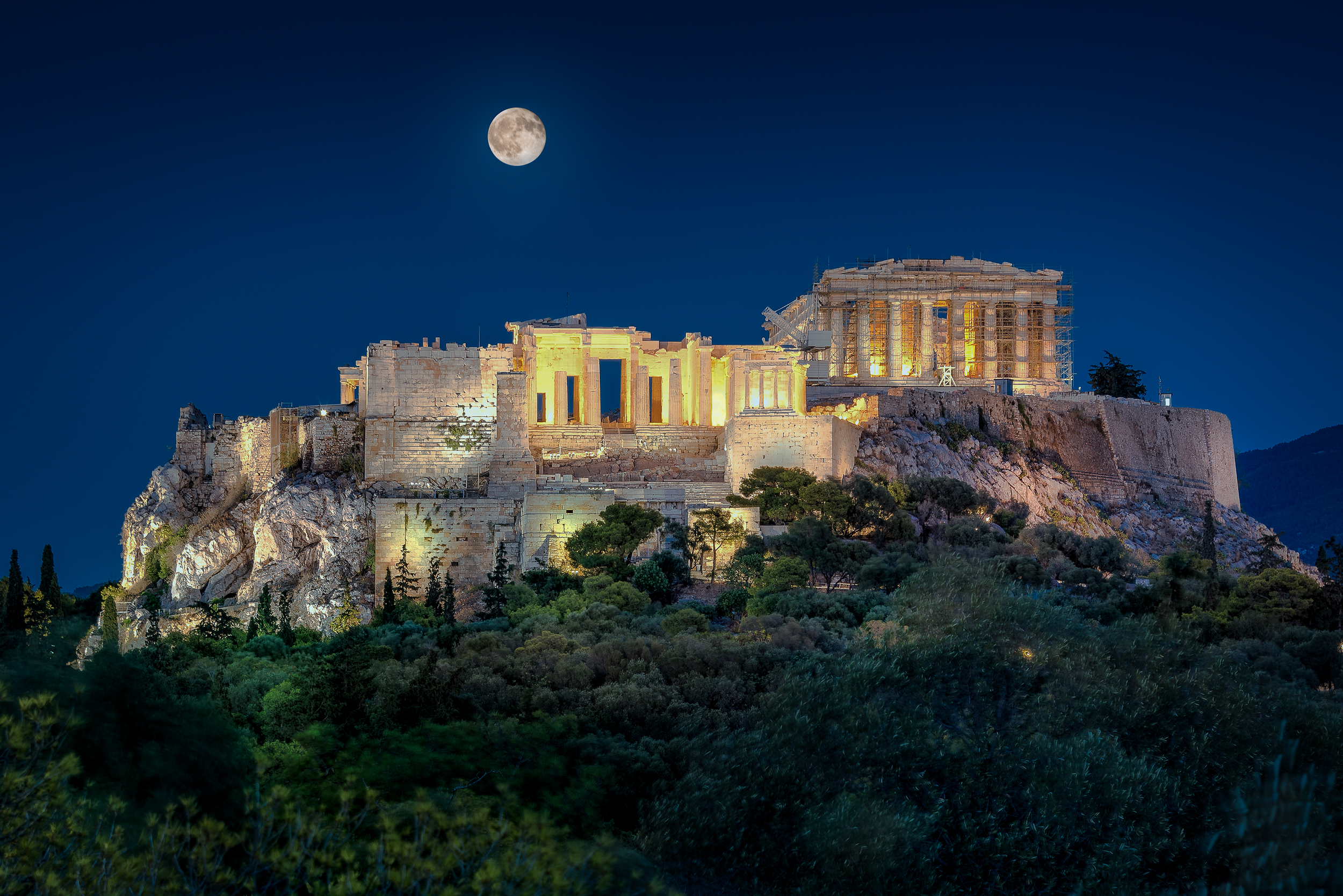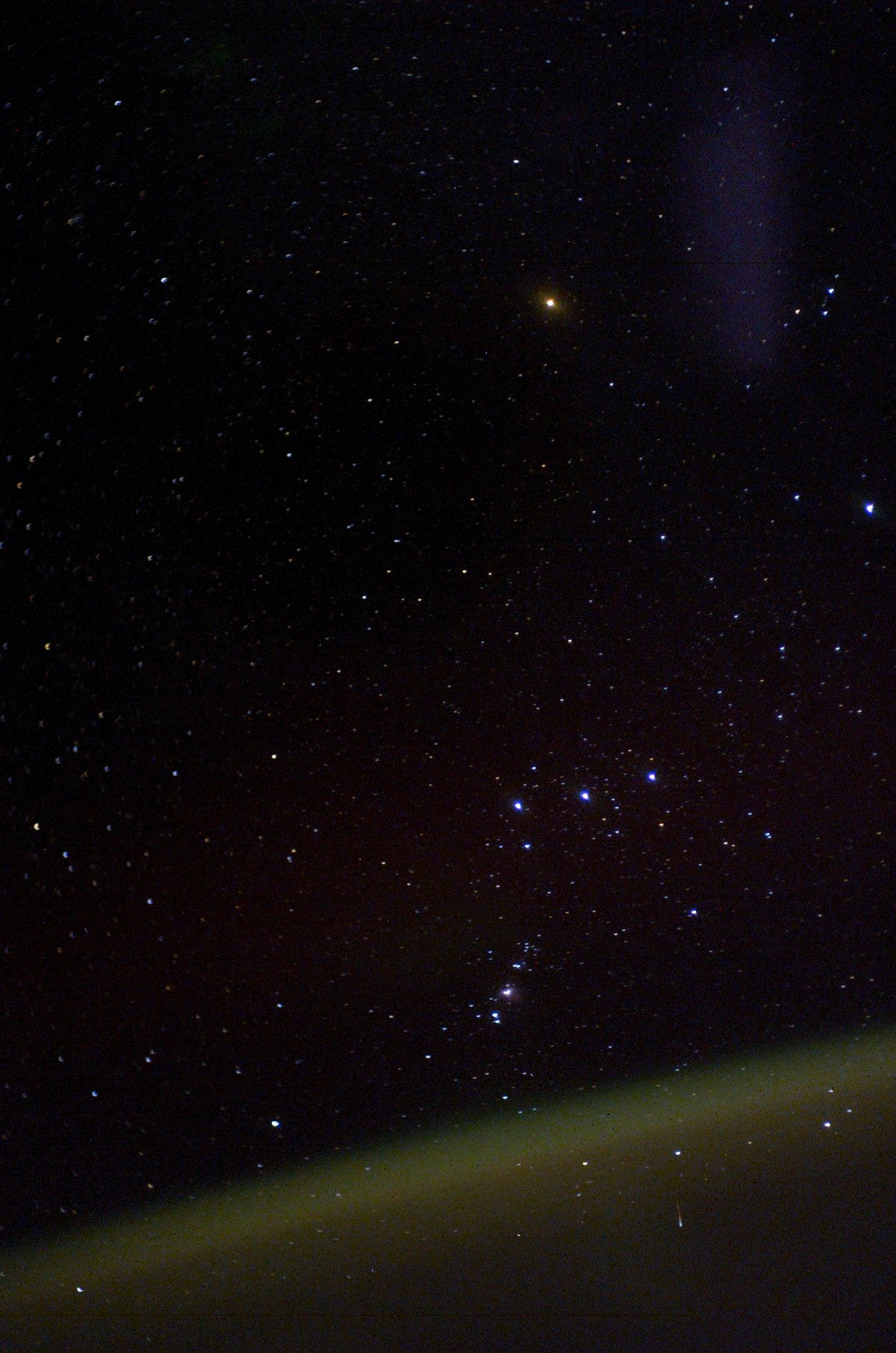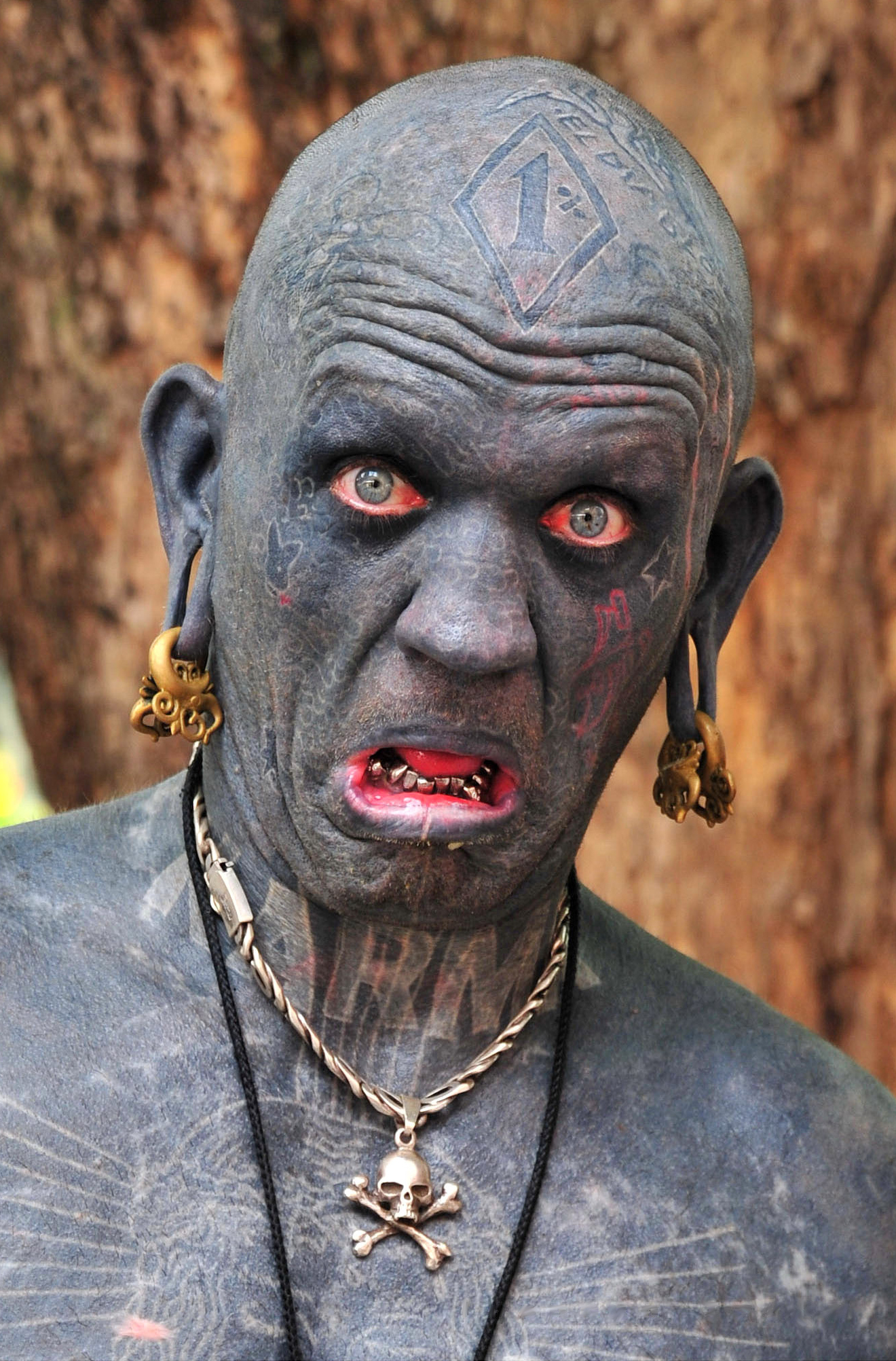|
Dark
Darkness is the condition resulting from a lack of illumination, or an absence of visible light. Human vision is unable to distinguish colors in conditions of very low luminance because the hue-sensitive photoreceptor cells on the retina are inactive when light levels are insufficient, in the range of visual perception referred to as scotopic vision. The emotional response to darkness has generated metaphorical usages of the term in many cultures, often used to describe an unhappy or foreboding feeling. "Darkness" may also refer to night, which occurs when the Sun is more than 18° below the horizon. Scientific Perception The perception of darkness differs from the mere absence of light that sometimes lead to afterimages. In perceiving, the eye is active, and the part of the retina that is unstimulated produces a complementary afterimage. Physics In terms of physics, an object is said to be dark when it absorbs photons, causing it to appear dim compared to other objects. ... [...More Info...] [...Related Items...] OR: [Wikipedia] [Google] [Baidu] |
Night
Night, or nighttime, is the period of darkness when the Sun is below the horizon. Sunlight illuminates one side of the Earth, leaving the other in darkness. The opposite of nighttime is daytime. Earth's rotation causes the appearance of sunrise and sunset. Moonlight, airglow, starlight, and light pollution dimly illuminate night. The duration of day, night, and twilight varies depending on the time of year and the latitude. Night on other celestial bodies is affected by their rotation and orbital periods. The planets Mercury and Venus have much longer nights than Earth. On Venus, night lasts about 58 Earth days. The Moon's rotation is tidally locked, rotating so that one of the sides of the Moon always faces Earth. Nightfall across portions of the near side of the Moon results in lunar phases visible from Earth. Organisms respond to the changes brought by nightfall: darkness, increased humidity, and lower temperatures. Their responses include direct reactions a ... [...More Info...] [...Related Items...] OR: [Wikipedia] [Google] [Baidu] |
Bortle Dark-Sky Scale
The Bortle dark-sky scale (usually referred to as simply the Bortle scale) is a nine-level numeric scale that measures the night sky's sky brightness, brightness of a particular location. It quantifies the astronomy, astronomical observability of celestial objects and the interference caused by light pollution. Amateur astronomer John E. Bortle created the scale and published it in the February 2001 edition of ''Sky & Telescope'' magazine to help skywatchers evaluate the darkness of an observing site, and secondarily, to compare the darkness of observing sites. The scale ranges from Class 1, the darkest skies available on Earth, through to Class 9, inner-city skies. It gives several criteria for each level beyond naked-eye limiting magnitude (NELM). The accuracy and utility of the scale have been questioned in 2014 research. The table summarizes Bortle's descriptions of the classes. For some classes, there can be drastic differences from one class to the next, e.g, Bortle 4 to 5, ... [...More Info...] [...Related Items...] OR: [Wikipedia] [Google] [Baidu] |
Vantablack
Vantablack is a class of super-black coatings with total hemispherical reflectances (THR) below 1% in the visible spectrum. The name is a portmanteau of the acronym ''VANTA'' ( vertically aligned nanotube arrays) and ''black''. The original Vantablack coating was grown from a chemical vapour deposition process (CVD) and is claimed to be the "world's darkest material" absorbing up to 99.965% of visible light measured perpendicular to the material. The coatings are unique in that they are super-black and retain uniform light absorption from almost all viewing angles. Original CVD Vantablack is no longer manufactured for commercial applications as it has been superseded by Vantablack spray coatings that offer similar optical performance in key parts of the electromagnetic spectrum. History Ben Jensen, founder and CTO of Surrey NanoSystems, invented the coatings, which were publicly unveiled in July 2014, and eventually commercialized by the scientific team from Surrey NanoSystem ... [...More Info...] [...Related Items...] OR: [Wikipedia] [Google] [Baidu] |
Lighting
Lighting or illumination is the deliberate use of light to achieve practical or aesthetic effects. Lighting includes the use of both artificial light sources like lamps and light fixtures, as well as natural illumination by capturing daylight. Daylighting (architecture), Daylighting (using windows, skylights, or Architectural light shelf, light shelves) is sometimes used as the main source of light during daytime in buildings. This can save energy in place of using artificial lighting, which represents a major component of energy consumption in buildings. Proper lighting can enhance task performance, improve the appearance of an area, or have positive psychological effects on occupants. Indoor lighting is usually accomplished using light fixtures, and is a key part of interior design. Lighting can also be an intrinsic component of landscaping, landscape projects. History With the Control of fire by early humans, discovery of fire, the earliest form of artificial lighting used ... [...More Info...] [...Related Items...] OR: [Wikipedia] [Google] [Baidu] |
Visual Perception
Visual perception is the ability to detect light and use it to form an image of the surrounding Biophysical environment, environment. Photodetection without image formation is classified as ''light sensing''. In most vertebrates, visual perception can be enabled by photopic vision (daytime vision) or scotopic vision (night vision), with most vertebrates having both. Visual perception detects light (photons) in the visible spectrum reflected by objects in the environment or emitted by light sources. The light, visible range of light is defined by what is readily perceptible to humans, though the visual perception of non-humans often extends beyond the visual spectrum. The resulting perception is also known as vision, sight, or eyesight (adjectives ''visual'', ''optical'', and ''ocular'', respectively). The various physiological components involved in vision are referred to collectively as the visual system, and are the focus of much research in linguistics, psychology, cognitive s ... [...More Info...] [...Related Items...] OR: [Wikipedia] [Google] [Baidu] |
NBC News
NBC News is the news division of the American broadcast television network NBC. The division operates under NBCUniversal Media Group, a division of NBCUniversal, which is itself a subsidiary of Comcast. The news division's various operations report to the president of NBC News, Rebecca Blumenstein. The NBCUniversal News Group also comprises MSNBC, the network's 24-hour liberal cable news channel, as well as business and consumer news channels CNBC and CNBC World, the Spanish language and United Kingdom-based Sky News. NBC News aired the first regularly scheduled news program in American broadcast television history on February 21, 1940. The group's broadcasts are produced and aired from 30 Rockefeller Plaza, NBCUl's headquarters in New York City. The division presides over the flagship evening newscast ''NBC Nightly News'', the world's first of its genre morning television program, ''Today (American TV program), Today'', and the longest-running television series in American hi ... [...More Info...] [...Related Items...] OR: [Wikipedia] [Google] [Baidu] |
Sky Brightness
Sky brightness refers to the visual perception of the sky and how it scatters and diffuses light. The fact that the sky is not completely dark at night is easily visible. If light sources (e.g. the Moon and light pollution) were removed from the night sky, only direct starlight would be visible. The sky's brightness varies greatly over the day, and the primary cause differs as well. During daytime, when the Sun is above the horizon, the direct scattering of sunlight is the overwhelmingly dominant source of light. During twilight (the duration after sunset or before sunrise until or since, respectively, the full darkness of night), the situation is more complicated, and a further differentiation is required. Twilight (both dusk and dawn) is divided into three 6° segments that mark the Sun's position below the horizon. At civil twilight, the center of the Sun's disk appears to be between 1/4° and 6° below the horizon. At nautical twilight, the Sun's altitude is betwee ... [...More Info...] [...Related Items...] OR: [Wikipedia] [Google] [Baidu] |
Guinness World Records
''Guinness World Records'', known from its inception in 1955 until 1999 as ''The Guinness Book of Records'' and in previous United States editions as ''The Guinness Book of World Records'', is a British reference book published annually, listing world records both of human achievements and the extremes of the natural world. Sir Hugh Beaver created the concept, and twin brothers Norris and Ross McWhirter co-founded the book in London in August 1955. The first edition topped the bestseller list in the United Kingdom by Christmas 1955. The following year the book was launched internationally, and as of the 2025 edition, it is now in its 70th year of publication, published in 100 countries and 40 languages, and maintains over 53,000 records in its database. The international franchise has extended beyond print to include television series and museums. The popularity of the franchise has resulted in ''Guinness World Records'' becoming the primary international source for cata ... [...More Info...] [...Related Items...] OR: [Wikipedia] [Google] [Baidu] |
Pixel
In digital imaging, a pixel (abbreviated px), pel, or picture element is the smallest addressable element in a Raster graphics, raster image, or the smallest addressable element in a dot matrix display device. In most digital display devices, pixels are the smallest element that can be manipulated through software. Each pixel is a Sampling (signal processing), sample of an original image; more samples typically provide more accurate representations of the original. The Intensity (physics), intensity of each pixel is variable. In color imaging systems, a color is typically represented by three or four component intensities such as RGB color model, red, green, and blue, or CMYK color model, cyan, magenta, yellow, and black. In some contexts (such as descriptions of camera sensors), ''pixel'' refers to a single scalar element of a multi-component representation (called a ''photosite'' in the camera sensor context, although ''wikt:sensel, sensel'' is sometimes used), while in yet ... [...More Info...] [...Related Items...] OR: [Wikipedia] [Google] [Baidu] |
Creation Of Light
Creation or The Creation or Creations, may refer to: Arts and entertainment Film * ''Creation'' (1922 film), a British silent drama * ''Creation'' (unfinished film), 1931 * ''Creation'' (2009 film), about Charles Darwin Literature * ''Creation'' (novel), by Gore Vidal, 1981 *''The Creation'', a 2006 book by E. O. Wilson *"The Creation", a 1927 poem by James Weldon Johnson in '' God's Trombones'' Music * Creation Records, a record label created in 1983 * ''The Creation'' (Haydn), a 1798 oratorio by Joseph Haydn *''Creation'', a movement by Nathaniel Shilkret in the '' Genesis Suite'', 1945 Bands * Creation (American band), a teen musical group * Creation (Japanese band), formed as Blues Creation * Creations (band), Australian Christian band * The Creation (band), an English rock band Albums * ''Creation'' (John Coltrane album), 1965 * ''Creation'' (Branford Marsalis album), 2001 * ''Creation'' (Keith Jarrett album), 2015 * ''Creation'' (Archie Roach album), 2013 * ''Creation' ... [...More Info...] [...Related Items...] OR: [Wikipedia] [Google] [Baidu] |
Computer Display
A computer monitor is an output device that displays information in pictorial or textual form. A discrete monitor comprises a visual display, support electronics, power supply, housing, electrical connectors, and external user controls. The display in modern monitors is typically an LCD with LED backlight, having by the 2010s replaced CCFL backlit LCDs. Before the mid-2000s, most monitors used a cathode-ray tube (CRT) as the image output technology. A monitor is typically connected to its host computer via DisplayPort, HDMI, USB-C, DVI, or VGA. Monitors sometimes use other proprietary connectors and signals to connect to a computer, which is less common. Originally computer monitors were used for data processing while television sets were used for video. From the 1980s onward, computers (and their monitors) have been used for both data processing and video, while televisions have implemented some computer functionality. Since 2010, the typical display aspect ... [...More Info...] [...Related Items...] OR: [Wikipedia] [Google] [Baidu] |
Composition (visual Arts)
The term composition means "putting together". It can be thought of as the organization of art. Composition can apply to any work of art, from music through writing and into photography, that is arranged using conscious thought. In the visual arts, composition is often used interchangeably with various terms such as ''design, form, visual ordering,'' or ''formal structure,'' depending on the context. In graphic design for press and desktop publishing, composition is commonly referred to as page layout. The composition of a picture is different from its subject (what is depicted), whether a moment from a story, a person or a place. Many subjects, for example Saint George and the Dragon, are often portrayed in art, but using a great range of compositions even though the two figures are typically the only ones shown. Elements of design The central visual element, known as ''element of design'', ''formal element'', or ''element of art,'' constitute the vocabulary with which the vi ... [...More Info...] [...Related Items...] OR: [Wikipedia] [Google] [Baidu] |





